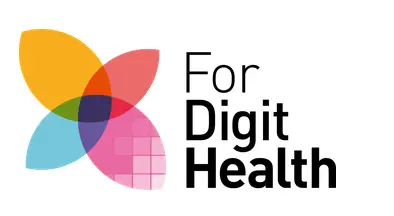Technostress in Companies: When the Burden of Digital Technologies Spreads Like a Contagious Epidemic


Description
Digitalization brings numerous advantages for individuals, businesses, and society, including increased productivity, reduced transaction costs, improved information availability, and higher quality of life. However, the intensive use of digital technologies also leads to various changes that potentially pose significant dangers, such as impacting mental and physical health.
A core issue is technostress, which can be caused by various stress factors. These factors include the constant feeling of being available, the blurred boundaries between work and personal life, and information overload. In the workplace, technostress can lead to burnout symptoms among employees and cause significant financial damage to companies due to productivity losses.
Previous research has examined the causes of technostress related to information systems (e.g., complex user interfaces) and has focused on individuals and their stress behaviors. However, people often work in social teams, raising the question whether technostress can be contagious.
This project aims to thoroughly explore the nature and ways of possible "contagion" of stress-induced emotions among employees to the extent that the additional interpersonal digital stress potential can be recognized.
Results
Within the research consortium, we answered questions such as "What is technostress?", "What are its causes and consequences?", and "What can we do about it?" (https://gesund-digital-leben.de/).
Our research in technostress shows that it can also have positive effects when individuals perceive it as a "challenge", i.e., an opportunity to grow. Related to IT usage, we demonstrated that the challenge leads individuals to use IT innovatively and go beyond their usual routines. We identified different personality profiles that are particularly susceptible to technostress and revealed how mindfulness approaches can be an effective strategy for dealing with technostress.
We showed empirically and theoretically what helps counteracting technostress. Technostress interventions require a multidimensional approach, including technological, social, and cultural measures. The choice of specific interventions depends on reducing the perception of a technostressor and how other technostressors may be perceived more intensely due to the intervention. We recommend organizations seeking suitable measures to avoid "quick-win" strategies focused on single interventions. Instead, a conscious effort should be made to implement multiple interventions, particularly social and cultural ones. Even though not all interventions may fit to everyone, employees appreciate the company's commitment to their well-being.
Within our project, we also explored whether technostress can be contagious. Technostress can indeed be contagious, especially in close work environments. Contagion can occur through the absorption of emotions (emotional contagion) and problems (cognitive contagion) from others. It is challenging to counteract emotional contagion since it happens automatically when individuals interact with their close social circles with empathy and sympathy. Often, only consciously distancing oneself from one's emotional response to others can counteract technostress caused by contagion. In the case of cognitive contagion, building self-confidence in one's IT skills and consciously recognizing one's ability to handle others' problems can be helpful.
Our results enable future research options and outline open questions: Does mutual stress contagion lead to a digital stress spiral? Are there organizational and cultural factors in companies that make digital stress more contagious? Which personality type is more or less susceptible to each type of contagion? What is the relationship between the two kinds of contagion? To what extent can positive technostress be contagious? We will address these questions in future research.
Selected Publications
- Maier, C., Laumer, S., Tarafdar, M., Mattke, J., Reis, L., and Weitzel, T. (2021)
Challenge and hindrance IS use stressors and appraisals: Explaining contrarian associations in post-acceptance IS use behavior
Journal of the Association for Information Systems (JAIS) (22:6) , p.1590-1624, http://dx.doi.org/10.17705/1jais.00709 - Pflügner, K., Maier, C., & Weitzel, T. (2021)
The direct and indirect influence of mindfulness on techno-stressors and job burnout: A quantitative study of white-collar workers
Computers in Human Behavior, 155, 106566. https://doi.org/10.1016/j.chb.2020.106566 - Pflügner, K., Maier, C., Mattke, J., & Weitzel, T. (2020)
Personality Profiles that put Users at Risk of Perceiving Technostress: A Qualitative Comparative Analysis with the Big Five Personality Traits
Business & Information Systems Engineering, 63, 389–402. https://doi.org/10.1007/s12599-020-00668-7 - Pflügner, K., Reis, L., Maier, C., & Weitzel, T. (2020)
Communication Measures to Reduce Techno-Invasion and Techno-Overload: A Qualitative Study Uncovering Positive and Adverse Effects
Proceedings of the 20th ACM SIGMIS CPR Conference, Nuremberg, Germany. https://doi.org/10.1145/3378539.3393855
(Best Paper Award) - Maier, C. (2022)
Technostress und digitale Gesundheit: Digitaler Stress kann gesundheitsgefährdend und zugleich innovationstreibend sein
uni.vers Bamberg
![[Translate to English:] [Translate to English:]](/fileadmin/ishands/Logos/ishands_dunkel_Komplett_Druck_300ppi.png)